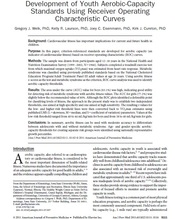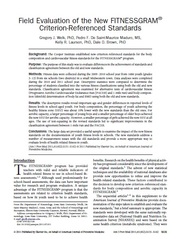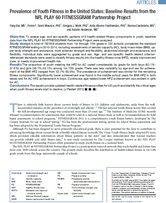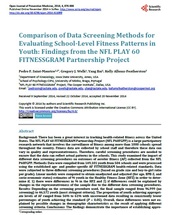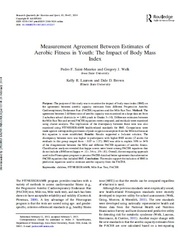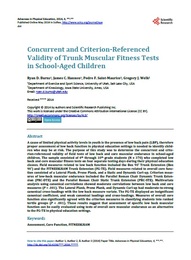Development of FITNESSGRAM Standards
|
Development of Youth Aerobic-Capacity Standards Using Receiver Operating Characteristic Curves
In this paper, criterion-referenced standards are developed for aerobic capacity based on receiver operating characteristic (ROC) curves. In summary, aerobic fıtness can be used with moderate accuracy to differentiate between adolescents with and without metabolic syndrome. Age- and gender-specifıc aerobic capacity thresholds for creating separate risk groups were identified using nationally representative growth percentiles. |
Field Evaluation of the New
FITNESSGRAM® Criterion-Referenced Standards This study examined differences in the achievement of standards and classifıcation agreement between the old and new standards. The large data set provided a useful sample to examine the impact of the new fıtness standards on the documentation of youth fıtness levels in schools. The new standards address a number of measurement issues with the old standards and provide a more appropriate way to evaluate levels of health-related fitness in youth. |
Surveillance of Health-Related Fitness
Validation of Fitness Assessments
International Collaborations
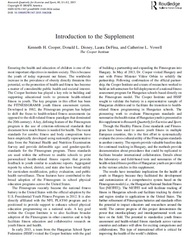
Special Issue: The Hungarian National Youth Fitness Study
The Hungarian School Sport Federation (HSSF) and the Cooper Institute agreed on a partnership to expand the Fitnessgram into Hungary. Following confirmation of the official partnership, the Cooper Institute and a team of researchers worked to build an infrastructure for full deployment of a national fitness assessment program for Hungarian schools based directly on the Fitnessgram model. The pioneering work to evaluate Fitnessgram standards and summarize the health status of Hungarian youth is presented in this supplement to Research Quarterly for Exercise and Sport. |
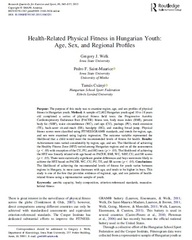
Health-Related Physical Fitness in Hungarian Youth: Age, Sex, and Regional Profiles
The purpose of this study was to examine region, age, and sex profiles of physical fitness in Hungarian youth. Results indicated that achievement rates varied considerably by region, age, and sex. The likelihood of achieving the recommended levels of fitness for youth varies between regions in Hungary, in most cases decreases with age, and tends to be higher in boys. This study is one of the few that provides evidence of regional, age, and sex patterns of health-related fitness using a representative sample of youth. |
